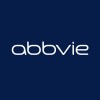
Cyanoacrylate Closure for Treatment of Venous Leg Ulcers
Venous Leg UlcerVenous leg ulcers (VLUs) are a common wound with significant morbidity and cost, and suboptimal therapeutic options. VLUs result from chronic venous insufficiency, including venous reflux and post-thrombotic syndrome. VLU can take from months to years to heal, and 54-78% recur. Current therapies include wound, compression therapy, and medications. These treatments can increase the rate of healing, and reduce recurrence, however these therapies can be burdensome, painful, and ineffective, and despite these therapies, ~50% of wounds become chronic. Chronic VLUs can be painful, malodorous, and infected, and they often significantly limit an individual's function and mobility. An emerging therapy for symptomatic venous reflux is the closure of the culprit vein by endovenous closure with a cyanoacrylate adhesive implant. Recent studies show cyanoacrylate closure (CAC) to be a safe and effective treatment for varicosities resulting from symptomatic incompetent great saphenous veins. This study will evaluate the safety and effectiveness of CAC for VLUs.

The Effect of Natrox® Oxygen Wound Therapy on the Healing Rate of Chronic Diabetic Foot Ulcers
Diabetic Foot UlcerSurgical WoundA Multicentre Randomized Controlled Trial to Investigate the Effect of Natrox Topical Oxygen Wound Therapy on the Healing rates of Diabetic Foot Ulcers.

Dose-Ranging Phase 2b Study of ABX464 in Moderate to Severe Ulcerative Colitis
Ulcerative ColitisPhase IIb study to evaluate the efficacy and the safety of 3 dose-levels of ABX464, administered daily in patients with moderate to severe Ulcerative Colitis.

Safety and Efficacy of PBF-677 in Ulcerative Colitis Patients
Ulcerative ColitisThis is a Phase IIa (proof of concept), randomized, double blind, placebo-controlled, multicentre clinical trial to evaluate the safety and efficacy of daily PBF-677 oral treatment during 28 days in Ulcerative colitis (UC) patients who are not receiving immunosuppressants and present mild-to-moderate activity of the disease. Enrolled patients would receive standard high doses of 5-ASA (4g), according to current clinical guidelines, and are randomized to receive also PBF-677 or placebo.

BI 655130 Long-term Treatment in Patients With moderate-to Severe Ulcerative Colitis
ColitisUlcerativeTo evaluate the long-term safety of BI 655130 (SPESOLIMAB) in patients with moderate to severely active ulcerative colitis, who have completed treatment in previous trials To evaluate the long-term efficacy of BI 655130 (SPESOLIMAB) in patients with moderate to severely active ulcerative colitis, who have completed treatment in previous trials

A Study to Investigate How Well Ravagalimab (ABBV-323) Works and How Safe it is in Participants...
Ulcerative Colitis (UC)Study M15-722 is a Phase 2a study to investigate the efficacy and safety of Ravagalimab (ABBV-323) in participants with moderate to severe UC who failed prior therapy.

A Study of Efficacy and Safety of Combination Therapy With Guselkumab and Golimumab in Participants...
ColitisUlcerativeThe purpose of this study is to evaluate the clinical efficacy and safety of combination therapy with guselkumab and golimumab in participants with moderately to severely active ulcerative colitis (UC).

A Study to Evaluate the Safety of PRV-300 in Adult Subjects With Moderately to Severely Active Ulcerative...
Ulcerative ColitisThe purpose of this study is to evaluate the safety and tolerability of PRV-300 for 12 weeks in subjects with active ulcerative colitis. Subjects will receive either PRV-300 or placebo treatment. Each group will receive study drug over a total of 12 weeks, followed by an 8-week safety follow-up period.

Vaporous Hyperoxia Therapy (VHT) in the Treatment of Foot Wounds
Neuropathic Foot UlcerFoot UlcerThe purpose of this study is to evaluate the effectiveness of Vaporous Hyperoxia Therapy (VHT), previously named Misty (WTS-1000) for the treatment of chronic foot ulcers.

Kerecis Omega3 Wound Plus SOC vs. SOC Alone in Treating Severe Diabetic Foot Ulcers and Forefoot...
Diabetic Foot UlcerDehiscence of Amputation Stump1 moreThis is a prospective, multi-national, multi-centre, randomized, non-blinded (photo evaluation is blinded), controlled clinical investigation in patients suffering from diabetic wounds reaching to tendon, bone, or joint. Patients will be randomised to received intact fish skin (Kerecis™ Omega3 Wound) plus standard of care or standard of care alone, and wound healing compared over 16 weeks.
